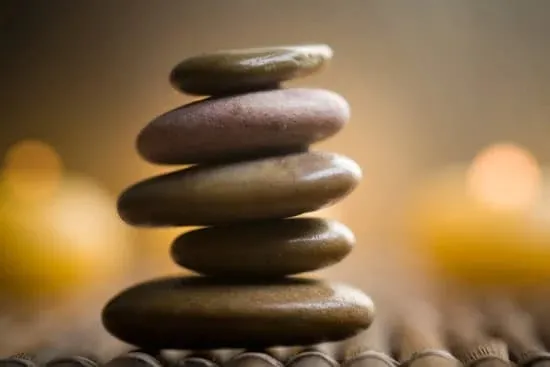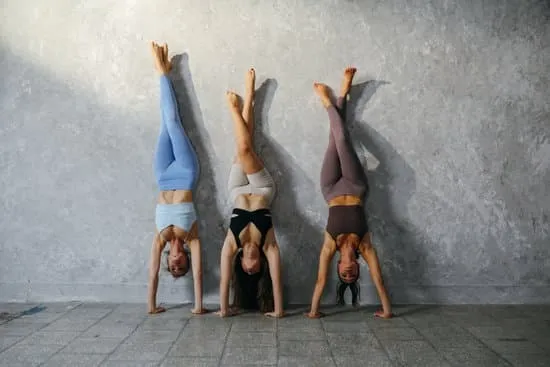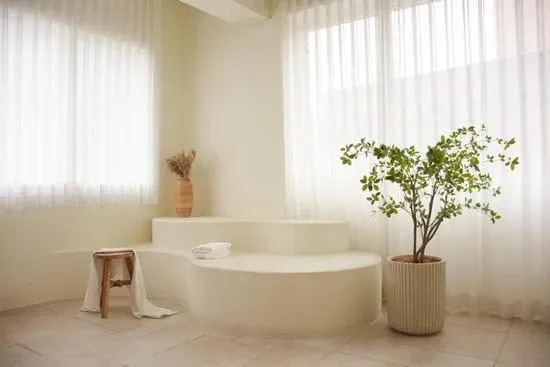Sleep Smarter: Optimizing Your Digital Evening Routine

You're exhausted, but sleep won't come. Your mind races with thoughts from the day, replaying conversations and tomorrow's to-do list. The clock ticks past midnight, then one, then two. You finally drift off, only to wake feeling unrested. If this sounds familiar, your evening technology habits may be silently sabotaging your sleep quality.
Sleep is fundamental to health, yet an estimated 50-70 million Americans struggle with sleep disorders, according to the Centers for Disease Control and Prevention. While many factors influence sleep quality, the relationship between technology use and sleep disruption has become increasingly clear through scientific research.
The good news? By understanding how digital devices affect sleep and implementing strategic evening routines, you can dramatically improve your rest quality. This isn't about abandoning technology entirely—it's about using it wisely in the hours leading up to sleep.
The Science of Sleep and Screen Time
To understand why evening screen time affects sleep, we need to understand how our bodies prepare for rest. The sleep-wake cycle is regulated by circadian rhythms—internal biological clocks that respond to environmental cues, particularly light.
The Blue Light Problem
Digital screens emit blue light, a short-wavelength light that's particularly effective at suppressing melatonin, the hormone that signals to your body that it's time for sleep. Research from Harvard Health demonstrates that exposure to blue light in the evening can delay sleep onset by up to three hours and reduce overall sleep quality.
Our ancestors evolved with natural light cycles—bright blue-enriched daylight during the day, warm sunset tones in evening, and darkness at night. Modern devices disrupt this pattern by flooding our eyes with blue light long after the sun has set, essentially tricking our brains into thinking it's still daytime.
The Stimulation Factor
Beyond the direct impact of blue light, the content we consume on screens matters enormously. Checking work emails triggers stress responses. Social media scrolling activates comparison and FOMO. News consumption—especially negative news—elevates cortisol levels. Engaging videos or games stimulate the brain's reward centers.
All of this mental activation is incompatible with the downregulation your nervous system needs to transition into sleep. According to The Sleep Foundation, your body requires time to wind down and shift from sympathetic ("fight or flight") to parasympathetic ("rest and digest") nervous system dominance.
| Evening Activity | Impact on Sleep | Better Alternative |
|---|---|---|
| Checking work email | Increases cortisol, triggers stress | Set firm end-of-work boundaries |
| Social media scrolling | Overstimulates, creates emotional responses | Journal or light reading |
| Watching intense TV/movies | Elevates heart rate, engages emotions | Calm documentaries or audiobooks |
| Gaming | Triggers dopamine, hyper-focuses attention | Gentle stretching or meditation |
The Consequences of Poor Digital Sleep Hygiene
Chronic poor sleep doesn't just leave you feeling tired—it has far-reaching health implications documented by extensive research:
- Cognitive Impairment: Reduced attention, memory consolidation, and decision-making ability
- Mental Health: Increased risk of depression, anxiety, and mood disorders
- Physical Health: Higher risk of obesity, diabetes, cardiovascular disease, and weakened immune function
- Performance: Decreased productivity, creativity, and problem-solving capacity
- Safety: Increased accident risk due to impaired reaction time and judgment
The National Institutes of Health estimates that sleep disorders cost the US economy over $400 billion annually in healthcare costs and lost productivity. On an individual level, the cost is measured in diminished quality of life and wellbeing.
"Sleep is not a luxury—it's a biological necessity. Every system in your body depends on adequate sleep to function optimally. Protecting your sleep means protecting your health." — Dr. Debby Hamilton
Creating Your Optimal Digital Evening Routine
The key to better sleep lies in creating a consistent evening routine that supports your body's natural transition to rest. Here's how to build one that works for you.
Step 1: Establish Your Digital Sunset
Choose a specific time—ideally 1-2 hours before your target bedtime—when you'll stop using screens. This is your "digital sunset." Mark it clearly in your daily schedule and communicate it to family or roommates.
If completely avoiding screens isn't realistic, at minimum implement a "30-minute buffer"—no screens for the half hour immediately before bed.
Step 2: Prepare Your Sleep Environment
Transform your bedroom into a sleep sanctuary by removing or minimizing technology:
- Charge phones outside the bedroom (use a traditional alarm clock if needed)
- Remove TVs from the bedroom if possible
- Use blackout curtains to eliminate light pollution
- Keep the room cool (65-68°F / 18-20°C is optimal for most people)
- Minimize noise with earplugs or white noise machines if needed

Step 3: Create Calming Pre-Sleep Rituals
Replace screen time with activities that genuinely promote relaxation:
- Reading Physical Books: Choose calming content, not work-related material or thriller novels
- Gentle Stretching or Yoga: Release physical tension accumulated during the day
- Meditation or Breathing Exercises: Activate the parasympathetic nervous system
- Journaling: Process thoughts and concerns before lying down
- Bath or Shower: The subsequent drop in body temperature signals sleep readiness
- Listening to Calm Music or Audiobooks: At low volume, as background not stimulation
Step 4: If You Must Use Screens
Sometimes evening screen use is unavoidable. Minimize the impact with these strategies:
- Enable Blue Light Filters: Use Night Shift (iOS), Night Light (Windows), or blue light filter apps
- Reduce Brightness: Lower screen brightness significantly
- Increase Distance: Hold devices farther from your face or watch TV from greater distance
- Use E-readers Without Backlights: E-ink displays don't emit blue light
- Wear Blue Light Blocking Glasses: Amber-tinted lenses can reduce blue light exposure
- Choose Calm Content: Avoid anything intense, emotionally charged, or work-related
The Science-Backed Sleep Schedule
Research from sleep scientists suggests this optimal evening timeline:
3-4 Hours Before Bed:
- Finish your last caffeinated beverage
- Complete vigorous exercise
- Eat your last large meal
2 Hours Before Bed:
- Begin dimming lights throughout your home
- Start winding down mentally from the day's demands
- Initiate your digital sunset if possible
1 Hour Before Bed:
- Complete your pre-sleep routine (bath, skincare, etc.)
- Engage in calming activities only
- Keep lighting warm-toned and dim
30 Minutes Before Bed:
- Absolutely no screens
- Practice relaxation techniques
- Begin preparing for bed (brushing teeth, etc.)

Troubleshooting Common Challenges
Challenge: "I Need My Phone as an Alarm"
Solution: Invest in a dedicated alarm clock (under $20). If you must use your phone, place it across the room face-down, enabling "do not disturb" mode except for emergency contacts.
Challenge: "My Partner Uses Devices in Bed"
Solution: Have an honest conversation about how their screen use affects your sleep. Compromise might include using devices earlier in the evening, keeping brightness very low, or one partner leaving the bedroom for device use.
Challenge: "I Can't Fall Asleep Without TV"
Solution: This is actually a trained dependency, not a genuine need. Transition gradually by using a sleep timer that turns off TV progressively earlier each night. Replace with audio-only options like podcasts or audiobooks played at low volume.
Challenge: "Work Requires Evening Availability"
Solution: Establish clear boundaries about genuine emergencies versus perceived urgency. If you must check messages, do so earlier in the evening (by 7-8 PM), not right before bed. Negotiate on-call rotation schedules if possible.
Measuring Your Progress
Track these indicators to evaluate whether your new digital evening routine is working:
- Time it takes to fall asleep (should decrease over time)
- Number of times you wake during the night (should decrease)
- How rested you feel upon waking (should improve)
- Daytime alertness and energy (should increase)
- Mood and emotional regulation (should stabilize and improve)
Give your new routine at least 2-3 weeks before expecting significant changes. Sleep patterns take time to recalibrate, especially if you've been disrupting them for years.
💡 Quick Sleep Optimization Tips
- Keep bedroom temperature cool (65-68°F / 18-20°C)
- Use blackout curtains or eye masks
- Maintain consistent sleep and wake times—even on weekends
- Get morning sunlight exposure to reinforce circadian rhythms
- Limit afternoon naps to 20-30 minutes before 3 PM
- Consider magnesium supplementation (consult healthcare provider)
Beyond the Screen: Holistic Sleep Hygiene
While managing evening technology is crucial, optimal sleep requires attention to multiple factors:
- Physical Activity: Regular exercise improves sleep, but not within 3-4 hours of bedtime
- Diet: Avoid heavy meals, alcohol, and caffeine in the evening
- Stress Management: Address chronic stress through therapy, mindfulness, or other techniques
- Medical Issues: Consult healthcare providers about sleep apnea, restless legs, or other disorders
- Medication Side Effects: Some medications interfere with sleep; discuss with your doctor
If sleep problems persist despite good sleep hygiene, consult a sleep specialist. Chronic insomnia and other sleep disorders require professional treatment.
Frequently Asked Questions
Blue light suppresses melatonin production, the hormone that regulates sleep-wake cycles. Exposure to blue light from screens in the evening delays circadian rhythm, making it harder to fall asleep and reducing sleep quality. Research shows that even two hours of evening screen exposure can significantly impact melatonin levels and delay sleep onset.
Ideally, stop using screens 1-2 hours before bedtime. At minimum, avoid screens 30 minutes before sleep. If evening screen use is necessary, use blue light filters, reduce brightness significantly, and avoid stimulating content like work emails, intense entertainment, or social media.
Screen impact varies by distance, brightness, and content type. Smartphones held close to the face are most disruptive. E-readers with e-ink displays (without backlighting) have minimal impact. Television from a distance is less disruptive than tablets or phones, but content matters—exciting or stressful content can still interfere with sleep readiness regardless of the device.
Research shows that amber-tinted blue light blocking glasses can reduce blue light exposure and improve sleep quality for some people. However, they're not a perfect solution—the mental stimulation from content and the brightness of screens still affect sleep. Use them as one tool alongside other sleep hygiene practices, not as a replacement for limiting evening screen time.
References & Further Reading
- Centers for Disease Control and Prevention. (2024). "Sleep and Sleep Disorders." CDC.gov
- Harvard Health Publishing. (2023). "Blue Light Has a Dark Side." Harvard.edu
- The Sleep Foundation. (2024). "Technology and Sleep." SleepFoundation.org
- National Institutes of Health. (2023). "Sleep Disorders Research." NIH.gov

